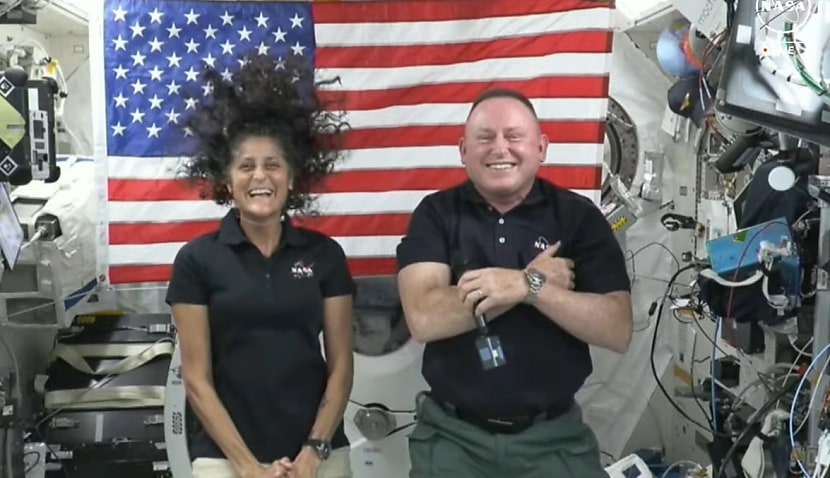
However, in a news conference on Wednesday, astronaut Sunita “Suni” Williams backed the team on the ground despite still not having a potential date to begin undocking from the ISS.
“I have a real good feeling in my heart that this spacecraft will bring us home, no problem,” she said.
Starliner finally blasted off to the ISS last month on its historic first crewed mission after a series of delays.
The spacecraft was due to return after just a week but issues with both the thrusters and helium leaks meant the two astronauts have remained effectively stranded on the space laboratory.
Specifically, five of Starliner’s 28 manoeuvring thrusters failed during the journey, a propellant valve did not properly close, and five helium leaks occurred.
NASA and Boeing are now trying to replicate the problem on Earth by test-firing identical thrusters at New Mexico’s White Sands Missile Range in a bid to find a solution.
Steve Stich, NASA commercial crew program manager, said engineers are using heaters to replicate the thermal conditions experienced by the thrusters but admitted the temperatures are “not quite what we would have hoped for”.
Meanwhile, teams have also launched an investigation at NASA’s Marshall Space Flight Center in Alabama to determine why a seal in Starliner’s propulsion system let helium leak out.
“We have a little bit more time to go through the data, and then make a decision as to whether we need to do anything different,” Stich said.
“But the prime option today is to return Butch [Barry Wilmore, the other astronaut] and Suni on Starliner. Right now, we don’t see any reason that wouldn’t be the case.”
NASA and Boeing have spent weeks playing down concerns regarding Starliner, insisting it remains cleared for return in case of an emergency.
The current mission is the final test flight before NASA certifies the vehicle for regular operational missions starting as soon as next year.
Starliner was initially due to blast off to the ISS earlier last month, but the first attempt was scrubbed at the last minute because of a faulty valve on the rocket’s Centaur upper stage.
A subsequent try on 17 May was also repeatedly delayed, this time due to a helium issue. Finally, a third problem was found to be linked to a flange in a thruster in the spacecraft’s service module.
May’s scrubbed launches are the latest in years of issues for Starliner, which Boeing hopes will be able to regularly send US astronauts into space much like SpaceX’s Dragon capsule.
Starliner’s first attempt at a flight without humans onboard failed in 2019 due to software glitches, but it eventually docked with the ISS in May 2022.

Adam Thorn
Adam is a journalist who has worked for more than 40 prestigious media brands in the UK and Australia. Since 2005, his varied career has included stints as a reporter, copy editor, feature writer and editor for publications as diverse as Fleet Street newspaper The Sunday Times, fashion bible Jones, media and marketing website Mumbrella as well as lifestyle magazines such as GQ, Woman’s Weekly, Men’s Health and Loaded. He joined Momentum Media in early 2020 and currently writes for Australian Aviation and World of Aviation.
Receive the latest developments and updates on Australia’s space industry direct to your inbox. Subscribe today to Space Connect here.












